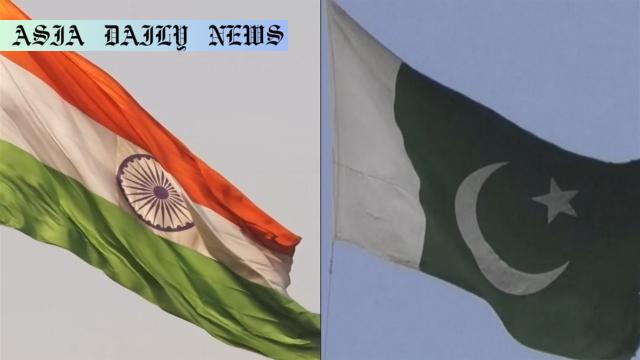Ceasefire: India and Pakistan face an uncertain future as military clashes continue despite agreeing to a truce mediated by the US.
India and Pakistan agreed to a ceasefire, but stability is uncertain due to military tensions.
The US played a pivotal role in mediating the truce, earning Pakistan’s gratitude.
Observers doubt whether both nations can maintain self-restraint for lasting peace.
Tensions escalated due to India’s missile strike in response to a terror attack.

Introduction: Ceasefire Between India and Pakistan
India and Pakistan, two nations with a long history of conflict, recently agreed to a ceasefire brokered by the United States. This agreement, announced by US President Donald Trump, brings a moment of respite to a region frequently marred by tension and hostility. While both countries have publicly committed to halting military actions, the sustainability of this truce remains uncertain as accusations of violations have already surfaced. In this article, we discuss the key events leading to the ceasefire, its implications, and the challenges ahead for India-Pakistan relations.
Backdrop: Escalation and Root Causes
The current standoff was triggered by India’s missile strike on Pakistani territory last Wednesday. This action was reportedly a retaliation for a deadly terror attack in Kashmir, a region disputed between the two nations for decades. This strike rapidly escalated tensions, with both sides engaging in verbal and physical skirmishes along the border. Despite a history of ceasefire agreements, including a major accord in 2003, both militaries have frequently accused each other of violations, preventing lasting peace.
The US Mediation: A Critical Turning Point
US President Donald Trump announced via social media that both India and Pakistan had reached an agreement to cease hostilities immediately. Pakistan’s foreign ministry expressed gratitude to the United States for its role in resolving the conflict. This marks yet another example of the United States leveraging its diplomatic influence in South Asia. While the involvement of a third-party mediator often signifies hope, it also highlights the inability of India and Pakistan to independently resolve their differences.
Challenges to Sustained Peace
While the ceasefire agreement brings relief, experts caution that the challenges to sustained peace in the region remain significant. Both nations harbor deep-seated mistrust stemming from historical grievances, territorial disputes, and political rhetoric. The recent exchange of accusations following the ceasefire announcement underscores the fragility of any truce between the two nations. Furthermore, the role of domestic politics in both countries often complicates attempts at dialogue and reconciliation.
What Lies Ahead?
As India and Pakistan navigate this truce, the international community watches closely. Continued US involvement and support from other global powers could be key to ensuring that both sides uphold the agreement. However, for long-term regional stability, India and Pakistan must invest in building mutual trust through diplomatic dialogue and people-to-people exchanges. The cost of continued hostility is far too great for both nations to bear.
Commentary
The Fragility of Ceasefires Between Rivals
The recent ceasefire between India and Pakistan offers a glimmer of hope in a fraught geopolitical landscape, but history reminds us of the fragility inherent in such agreements. Ceasefires often serve as temporary relief rather than a permanent solution to deeper conflicts. In the case of India and Pakistan, decades of mistrust and hostility, fueled by unresolved territorial disputes and political rivalries, make any agreement intrinsically fragile. Though the US mediation adds weight and credibility to the current ceasefire, reliance on external actors often limits the scope for enduring peace.
The Role of International Diplomacy
US involvement in mediating the ceasefire highlights the importance of international diplomacy in conflict resolution. Washington’s ability to bring both sides to the table showcases its enduring influence in South Asia. Yet, this intervention also raises questions about dependency on foreign mediation. For lasting peace, India and Pakistan must cultivate an independent framework for dialogue, one that prioritizes trust-building and conflict de-escalation. The international community, while supportive, cannot replace the commitment needed from the parties directly involved.
Prospects for Long-Term Peace
Looking ahead, the ceasefire’s success hinges on several factors, including restraint from military actions, curbing inflammatory rhetoric, and fostering collaborations on critical areas like trade and humanitarian issues. The road to peace is arduous, and setbacks are almost inevitable, but sustained efforts can gradually change the narrative of enmity. Leaders on both sides have a responsibility to prioritize peace over political gains, as the human and economic costs of conflict are far too steep to ignore. While the current ceasefire is a step in the right direction, only time will tell whether it represents a turning point or just another pause in an endless cycle of hostility.


